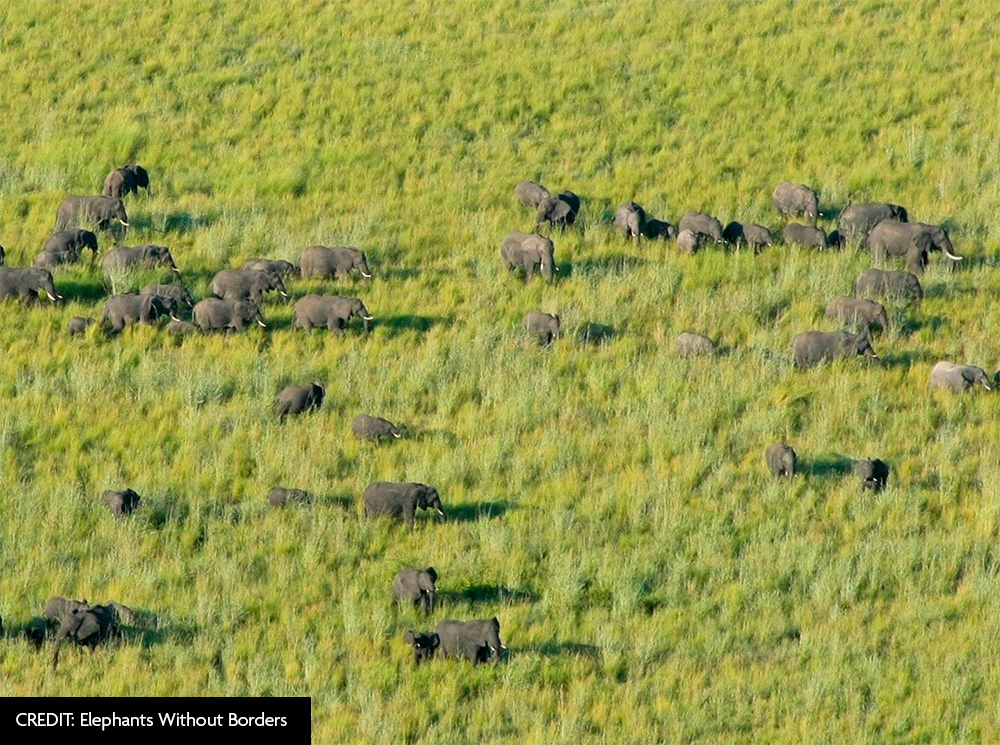The Kavango Zambezi Transfrontier Conservation Area (KAZA) contains the world’s largest population of savanna elephants, estimated at nearly 228,000 across five countries: Angola, Botswana, Namibia, Zambia, and Zimbabwe. While the overall
number remains stable, a deeper look reveals some deeply concerning trends that require urgent action.
A recent analysis by Elephants Without Borders (EWB) provides granular details behind the broad KAZA elephant survey numbers. And it raises flags about localized population declines, impacts of hunting and poaching, and the need for consistent monitoring
methods.
In Botswana, home to over half of KAZA’s elephants, numbers declined by 25% in hunting areas between 2018-2022 while increasing 28% in protected zones. Elephants seem to be shifting away from hunting zones, potentially undermining the very justification for reinstating hunting. The carcass ratio, indicating population health, has crossed a critical 8% threshold in most of Botswana’s elephant range, signaling deaths may outpace births.
Worryingly, fresh carcass evidence points to elevated poaching levels in certain border areas after the 2022 survey was completed. While overall poaching levels remain unclear, even localized poaching can severely impact elephant populations. The situation looks even worse in Angola, where the analysis contradicts the survey’s reported 80% increase. Evidence instead suggests Angola has become a “population sink”, with a staggering 98% decline in its western elephant ranges. High poaching levels and legacy landmine threats make Angola an ecological trap luring in elephants from surrounding countries only for populations to diminish.
Zambia’s Kafue region has seen elephant numbers potentially halve since 2015, requiring urgent follow-up investigations. Only Zimbabwe appears to have relatively stable and healthy elephant populations.
Perhaps most crucially, the analysis highlights how changing methodologies between successive KAZA elephant surveys make long-term comparisons extremely difficult. Consistent, standardized surveying is critical to truly understand if elephant numbers
are increasing, decreasing or remaining stable over years and decades. The KAZA vision of interconnected landscapes fostering resilient elephant populations remains powerful and important. But fulfilling it requires transparent sharing of rigorous scientific data and concerted conservation efforts focusing on the localized population declines and drivers of elephant mortality. Ignoring the sobering sub-regional trends could imperil the future of the world’s largest surviving elephant populations. We must heed these warning signs before it’s too late.

